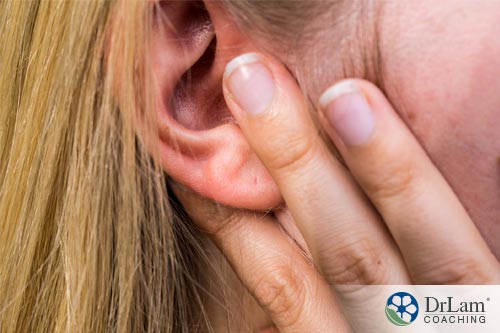 Research has connected having a metabolic inner ear disorder with the body’s ability to metabolize carbohydrates and related metabolic disorders.
Research has connected having a metabolic inner ear disorder with the body’s ability to metabolize carbohydrates and related metabolic disorders.
A retrospective study of 376 people that suffer from problems in the inner ear showed a link between the inner ear symptoms and carbohydrate metabolism, especially with regards to glucose and insulin levels. After looking at these patients’ otolaryngological data, how they were diagnosed, and the treatments they were given, the researchers saw that the inner ear symptoms manifested before the manifestation of the other metabolic disorders. In fact, they found previously undiagnosed type 2 diabetes in 39 of the 376 patients.
The relationship between diabetes and hearing loss was first understood by Abdel Jordão in 1864, but the exact mechanism of how diabetic hearing loss occurs is still not well understood. Some theories suggest that it could be due to the higher rates of atherosclerosis in diabetic patients, while in other cases, there seems to be a more direct link between the metabolic issues that bring on diabetes and the loss of hearing.
In lab studies of diabetic rats, they found that the rats had lost external hair cells. Remember, the hair cells in the organ of Corti are the ones that become impacted from the transmitted sound waves and then transmit these impulses to the cochlear nerve, which then sends these signals to the brain for interpretation.
What was even more interesting in this diabetic rat study is that the researchers observed that the rats that ingested sugars that are quickly absorbed are the ones that had even more intense hair cell loss.
Different studies have so far shown that altered carbohydrate metabolism is associated with vertigo, migraines, Ménière’s disease, and other auditory and vestibular disorders. Many of these studies showed that hyperinsulinemia was the most common denominator and that insulin levels were better indicators of changes in carbohydrate metabolism than glucose levels.
If you have AFS or a disruption in your bioenergetics circuit, you may develop hypoglycemia, insulin resistance, and even type 2 diabetes.
As mentioned earlier, one of the roles of cortisol is to help regulate blood sugar levels. It works along with insulin to give enough glucose to the cells, which then turn that into energy. When you’re under a lot of stress, and your body is going into “fight or flight” mode often, you need more energy. As your cortisol levels rise in the beginning stages of AFS, your blood sugar levels also rise.
Generally, high blood sugar levels have negative effects long-term and can lead to type 2 diabetes along with its many complications. But in the short-term, as your body is depleted from energy and you are suffering from fatigue, you may end up having sugar cravings. If you cave in and eat high glycemic-index foods, such as sweets or simple carbs, your blood sugar levels will spike and your pancreas then has to release a lot of insulin.
This burst of insulin will then induce a blood sugar crash, a hypoglycemic episode, prompting you to crave more sugar. This cycle of spikes and crashes can keep repeating, and it can cause a lot of problems, including adrenal crashes, anxiety, tiredness, insulin resistance, and even a metabolic inner ear disorder.
 Inside the inner ear is the stria vascularis, which you can think of as a metabolic center of the ear. It helps maintain the chemical integrity of the endolymph fluid by controlling the sodium-potassium balance through the sodium-potassium pump. The sodium-potassium pump is an enzyme called Na⁺ /K⁺ -ATPase, and it can be found in the plasma membrane of your cells, and in high concentrations in your stria vascularis.
Inside the inner ear is the stria vascularis, which you can think of as a metabolic center of the ear. It helps maintain the chemical integrity of the endolymph fluid by controlling the sodium-potassium balance through the sodium-potassium pump. The sodium-potassium pump is an enzyme called Na⁺ /K⁺ -ATPase, and it can be found in the plasma membrane of your cells, and in high concentrations in your stria vascularis.
This sodium-potassium pump is powered by ATP, and it moves the sodium and potassium ions in opposite directions, by extruding three sodium ions and importing two potassium ions into the cell.
Chemical changes of the endolymph, specifically the progressive reduction of the potassium concentrations and the progressive increase of sodium concentrations, were seen in a lab study of guinea pigs given insulin. Along with these changes in the chemical structure of the endolymph came a reduction in cochlear microphonics and of endocochlear potential. These changes usually occurred 30 minutes after insulin administration and lasted for around 80 minutes. But when the guinea pigs were given glucose, there was a partial recovery observed.
The concentrations of glucose and insulin in the blood have an effect on the cochlear homeostasis by way of affecting the chemical balance of sodium and potassium in the endolymph. When there is an increase in sodium and a reduction in potassium, an increase in osmotic pressure occurs, requiring more water to be in the endolymph, and causing something called endolymphatic hydrops.
Endolymphatic hydrops is a build-up of the endolymph fluid that then fills up the structures of the inner ear responsible for hearing and balance. That’s one of the causes of Ménière’s disease, though it is also linked to other inner ear problems.
The ratio of sodium to potassium is a very delicate mineral balance that must be maintained for optimal health, and it is unfortunately one that is negatively affected by stress and AFS.
 Stress doesn’t only increase cortisol, but other hormones as well, including aldosterone. Aldosterone is responsible for helping to regulate blood pressure and the fluid levels in your body by managing the sodium and potassium levels inside and outside the cells.
Stress doesn’t only increase cortisol, but other hormones as well, including aldosterone. Aldosterone is responsible for helping to regulate blood pressure and the fluid levels in your body by managing the sodium and potassium levels inside and outside the cells.
The more aldosterone is secreted, the more your sodium levels increase, which makes you retain more water, and which in turn raises your blood pressure. This is why you can sometimes feel bloated and have higher blood pressure when you’re stressed.
But as AFS advances, both cortisol levels and aldosterone levels drop, reducing the amount of sodium in the body, as well as lowering water retention. This is why you can feel dehydrated and have lower blood pressure, and why you might start to crave salt.
To compensate for the loss of sodium, potassium in your cells begins to leak out in order to keep the sodium-potassium ratio balanced. But because the amount of potassium lost is less than that of sodium, the potassium to sodium ratio increases, which creates an imbalance with its own problems.
Either way, when the sodium-potassium ratio is out of balance, your body suffers, and you may end up getting a metabolic inner ear disorder because of it, and the underlying cause of all of this may indeed by chronic stress.
In the retrospective study of 376 patients mentioned above, cochlear symptoms were found in 77, vestibular symptoms in 155, and 36 patients had both cochlear and vestibular symptoms. In the patients with cochlear symptoms, 102 of them had tinnitus. Ménière’s disease was found in 29 patients.
In the patients with cochlear symptoms, the main symptom they complained about was a sense of discomfort when hearing loud noises, and some of them complained they also felt blocking in the ears from time to time. For those with vestibular symptoms, the most common sensation was that of floating, and some had other symptoms of vertigo.
As for symptoms of disruption in their bioenergetics circuit, many of the patients did in fact report sugar cravings, especially in correlation with hypoglycemic episodes.
And, perhaps most interesting of all, many patients reported that their symptoms got worse when they were experiencing stress. This further proves the link between having a metabolic inner ear disorder and stress.
 Because the inner ears are such sensitive organs, they can act like the “canary in the coal mine,” so to speak. Symptoms of a metabolic inner ear disorder can be the first pointers to a more serious metabolic issue, such as a disruption in the bioenergetics circuit, type 2 diabetes, or some other issue with carbohydrate metabolism. They can also point to advancing adrenal fatigue, and the chronic stress that is causing it.
Because the inner ears are such sensitive organs, they can act like the “canary in the coal mine,” so to speak. Symptoms of a metabolic inner ear disorder can be the first pointers to a more serious metabolic issue, such as a disruption in the bioenergetics circuit, type 2 diabetes, or some other issue with carbohydrate metabolism. They can also point to advancing adrenal fatigue, and the chronic stress that is causing it.
Thankfully, many of the symptoms of a metabolic inner ear disorder are reversible, as are many of the underlying conditions that are causing or aggravating it.
The tinnitus that can come with adrenal fatigue can go away naturally as you begin the AFS recovery process. Some supplements can help tinnitus, such as vitamin C, vitamin B5, fish oil, gingko, melatonin, plant sterols, and zinc. Rehydrating the body is another way to improve tinnitus, and if you have AFS, it will typically take 24-48 hours to do so gradually so that you don’t lose too much sodium and disturb the sodium-potassium balance.
It is best to reduce or cut out caffeine, and any other dehydrating substances, when you have AFS for this reason. But do so very gradually, as your body is fragile when your adrenals are weak. If necessary, you may need to sprinkle a little bit of salt into your drinking water in order to replenish it in your body and retain more liquid. But this all depends on the stage of AFS you’re in, as well as your current state of health overall. It’s best not to attempt these changes on your own and instead seek the guidance of an experienced professional.
Healing from inner ear disorders depends on the initial cause. If it’s an infection, there are drugs that can help. If it’s an injury, it might just take some time and rehabilitation. If it’s a tumor, it may need to be removed. If it’s a metabolic inner ear disorder, then the best thing to do is to balance your metabolism and your bioenergetics circuit.
First of all, strengthening your adrenals will help your metabolism automatically, so if you have AFS, you’ll want to begin the recovery process as soon as possible. AFS recovery is comprised of eating an adrenal fatigue diet, taking the right supplements, getting a lot of rest and sleep, managing your stress levels, and getting the right kind of exercise at the right time.
The adrenal fatigue diet is great for balancing your bioenergetics circuit because it’s all about keeping your blood sugar levels stable and your body fueled throughout the day by eating regularly and at the same time each day. This will help you avoid the big stressor of blood sugar spikes and crashes, as well as the hyperinsulinemia that can come from that. Hyperinsulinemia is a huge risk factor for the development of a metabolic inner ear disorder, along with other problems in carbohydrate metabolism.
 The adrenal fatigue diet also focuses on eliminating high glycemic index foods and simple carbohydrates for this reason. The bulk of the diet is fresh, organic vegetables, animal proteins, whole grains, beans and legumes, healthy fats, and some types of fruits. It’s also low in potassium-rich foods in order to rebalance the sodium-potassium ratio.
The adrenal fatigue diet also focuses on eliminating high glycemic index foods and simple carbohydrates for this reason. The bulk of the diet is fresh, organic vegetables, animal proteins, whole grains, beans and legumes, healthy fats, and some types of fruits. It’s also low in potassium-rich foods in order to rebalance the sodium-potassium ratio.
Managing stress is another big component of adrenal fatigue recovery, because stress is the main cause of AFS in the first place, and it is a contributing factor in the triggering or worsening of a metabolic inner ear disorder. If the stress is psychological, you have many options. You can go to therapy, find support groups, meditate, read self-help books, or ask for support from trustworthy family or friends.
If the stress is caused by a bad diet, the adrenal fatigue diet will eliminate that stress. If it is caused by a health condition, find a holistic or functional medical doctor that can help heal your system as a whole rather than focusing only on the specific disease or specific organ that is affected. That way, you may end up finding relief for the symptoms, the condition, and the metabolic inner ear disorder that might be tagging along.
With exercise, you might want to be extra careful if you have a metabolic inner ear disorder that is causing dizziness, vertigo, lightheadedness, or nausea. If that’s the case, just start with adrenal breathing exercises until you feel better. Once you feel you have regained some balance and you can withstand more movement, you can try adrenal yoga exercises that don’t involve a lot of head movement or poses that put your head in an unsteady position
With a metabolic inner ear disorder, it’s all about addressing the underlying metabolic condition and any disruption in your bioenergetics circuit, rather than focusing purely on the symptoms, which are only there as messengers for a deeper issue.
